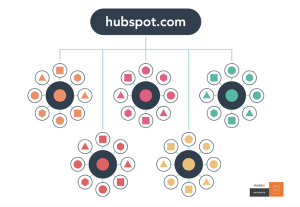Subscriber attrition is a contentious topic among email marketers. Most folks fall into one of two very distinct camps:
The Just-In-Case Crew. This faction wants to keep mailing lists large and opt-out rates low, even if conversion rates are modest.
The Lean Marketing Machine. This group is eager to shed dead weight and target a smaller, more engaged audience that produces higher conversion rates.
Regardless of which gang you get behind, there’s one tactic that’s universally valuable: the “opt-down” subscription option.
While many aspects of CAN-SPAM and CASL are debatably gray, their requirements to provide a simple opt-out process to email subscribers are fairly clear. But neither law prevents marketers from presenting alternatives to a full unsubscribe as long as the opt-out option remains unencumbered.
According to Forrester Research, a whopping 71% of unsubscribers say they leave a list due to email frequency, and 74% say they’ll jump ship due to irrelevant messaging. Most importantly, this survey indicated only 26% never wanted to hear from that brand or company again.
That’s incredible news for marketers, who stand to shrink unsub rates significantly if they understand — and honor — subscriber preferences.
Enter the opt-down option. Turning your existing unsubscribe page into a preference center is an important step toward increased subscriber retention. The opportunity to opt-out completely must remain prominent and straightforward, but those who aren’t absolutely certain they want to sever all ties with you will have the chance to consider other options.
Frequency preferences represent your lowest-hanging fruit. Find out if subscribers think they’re getting too much email from you, and explore how you can gauge the appropriate cadence. But take care not to simplify frequency preferences too much. By providing options for a specific mailing schedule (such as weekly or monthly), you may compromise the likelihood of conversion at a later time. Perhaps someone who opted for less frequent messaging six months ago is now in a buying cycle, and more frequent messaging is what it takes to convert them today. Other subscribers may not be ready to hear from you right now — would they like to take a break and reconnect later?
Relevance hedges out frequency as the leading factor for unsubscribes, so ask subscribers what’s relevant to them. Are they receiving content that they perceive as valuable? What specific products or services pique their interest? What types of messaging would they welcome? Offers and promotions? Newsletters? Events?
In the best scenarios, relevance dictates frequency. This approach, utilizing behavioral data to determine relevant content, enables marketers to determine, and even automate, the best or most important messages that should reach subscribers who may want to limit messaging.
Still not convinced it’s time to prioritize an opt-down strategy? Let’s revisit those Forrester figures: nearly 3/4ths of your unsubscribers would rather not part ways with you altogether. If you could convince just half of them to stay, your opt-down strategy would likely produce greater ROI than a similar investment in subscriber acquisition efforts.
While your ultimate goal should be to produce relevant, timely messages based on cues provided by subscribers (such as their email engagement, activity on your website and any order history) in conjunction with real-time conditions that may influence conversions, an opt-down strategy is an excellent first step toward retaining subscribers, gathering valuable data and boosting conversions with more tailored communication.
It doesn’t matter whether you like your lists large or lean. All you have to do to get started is ask the right questions.
(323)
Report Post



